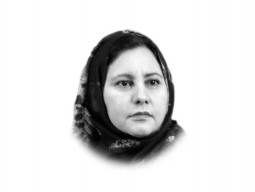
According to the Annual Status of Education (ASER) report released on Monday, a study of schools in rural areas found that around 45% of students in grade five could not read English sentences taught in grade two. While some may not be as concerned with rural children’s lack of familiarity with a foreign language, a large number of the children also lacked linguistic proficiency in local languages.
Only 59% of grade five students in rural areas could read stories in Urdu or any regional languages, which are introduced in grade two. As for math, only 57% of the fifth graders could successfully solve a two-digit division problem meant for second graders. Only 60% could solve a word problem requiring addition, while just 53% could do one involving multiplication Even worse, around 40% of the students couldn’t even read a clock. Perhaps that is for the better, lest they learn to calculate how much of their precious time their governments have wasted.
Although urban schools fared better than rural ones, the difference essentially amounted to putting lipstick on a pig. The numbers still look terrible. Only 70% of fifth graders in urban schools could read a story in Urdu or any local language at a second-grade level. Around two-thirds of students could read English at a second-grade level, and the same was the case for math problems involving division.
So how terrible is our primary education system? Well, the numbers actually reflect a massive improvement, with increases ranging from 13% to 17% between 2014 and 2019.
And that should be a cause for pause. Our education system is so broken that almost half of students being three grades behind their peers is supposed to be an improvement.
The other findings in the report are not any better. Only 59% of government schools have toilets. This, despite there being ample evidence to show that access to sanitary facilities improves enrolment and the general health and well-being of students. Even a few private schools too lack toilets. The fact that anyone would pay for their children to go to the 11% of schools that do not even have a toilet is perhaps the most damning indictment of the government school system.
The problems are so expansive that even the report’s authors only offered up the simplest of solutions, namely to include the addition of missing facilities into the main school budgets rather than treating it as a separate development head. There is a strong argument there. Instead of just trying to increase enrolment while standards go down a hole in the ground, basic facilities need to be added first. At least then, children will know what it means when they hear about the government flushing their futures down the toilet.
Unlike many of the problems making headlines these days, this is most definitely not a problem caused by the incumbent government. Unfortunately, Prime Minister Imran Khan has done little to alleviate it, with education being one of the critical areas that saw budget cuts. Yes, the ruling party does have some ideas to improve higher education, but they will all be for nought if kids can’t even read a wall clock.
Published in The Express Tribune, February 12th, 2020.
Like Opinion & Editorial on Facebook, follow @ETOpEd on Twitter to receive all updates on all our daily pieces.















COMMENTS
Comments are moderated and generally will be posted if they are on-topic and not abusive.
For more information, please see our Comments FAQ